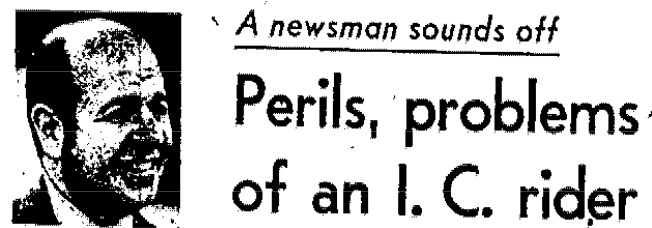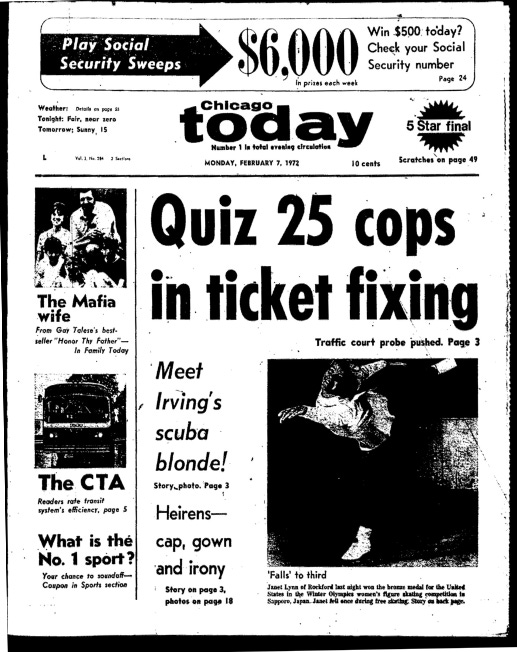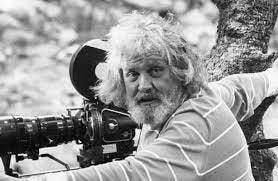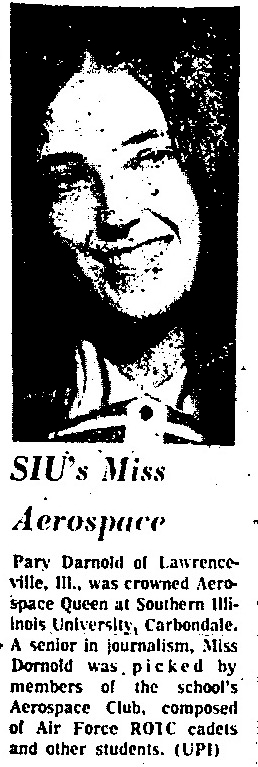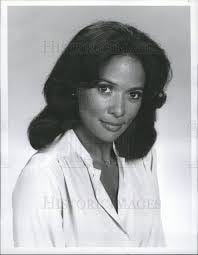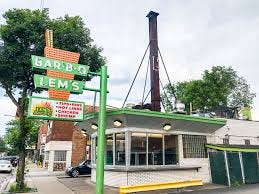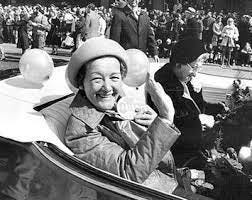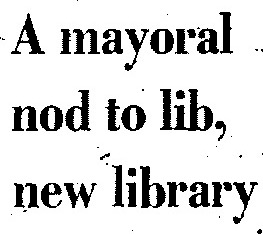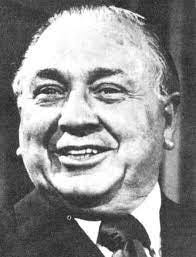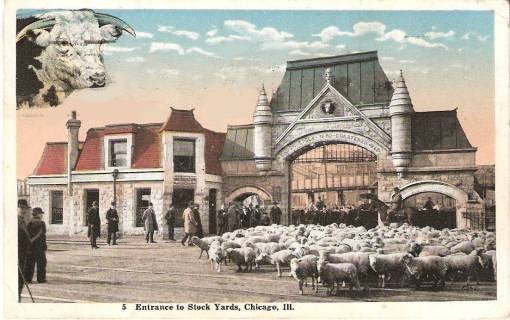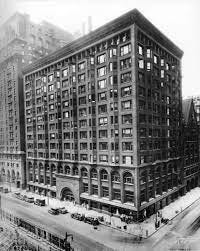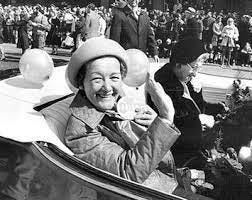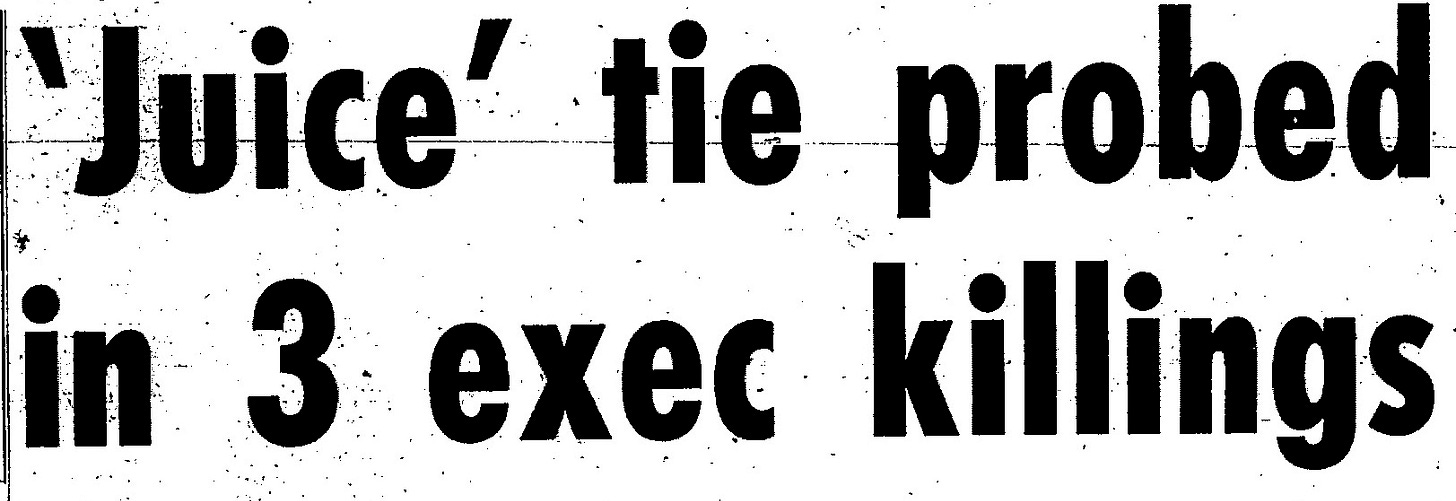THIS CRAZY DAY IN 1972: Traffic court bribes, Twiggy, & Father Greeley blasts bishops
Weekly Compilation, February 6-13, 1972
To access all site contents, click HERE.
Why do we run this separate item peeking into newspapers from 1972? Because 1972 was part of the ancient times when everybody read a paper. Everybody, everybody, everybody. Even kids. So Steve Bertolucci, the 10-year-old hero of the novel serialized at this Substack, read the paper too—sometimes just to have something to do. These are some of the stories he read. If you’d like, keep up with the 1972 papers every day on Twitter, @RoselandChi1972.
February 7, 1972
Chicago Tribune: Public Is Pleased by Use of Anti-Skyjack Devices
By Thomas Seslar
The FAA has finally figured out it should maybe do something to discourage people from bringing guns, hand grenades and knives on commercial airlines After all, there were 25 U.S. skyjackings in 1971.
This is how the FAA cracks down:
“A new federal rule requiring the screening of air travelers in an attempt to prevent skyjackings went into effect yesterday throughout the nation,” Seslar writes. The new rule “requires that airline personnel or federal employees screen every passenger at boarding time by using at least one of four methods:”
Again, to be clear: The airlines only have to do *one* of these four things:
Walk passengers past metal detectors.
Observe passengers to see if they fit an FAA behavioral profile for skyjackers.
Ask for an ID.
Frisk, and/or search baggage.
United says it’s used metal detectors “for most” O’Hare departures for a few months already. To give you an idea of how this system will work, there will be 28 hijackings in 1972—three more than 1971.
And yes Younger Readers, you didn’t even show an ID to get on a plane before January 1972--a time when you could count on reading one or two stories every week about somebody pulling a gun on pilots and stewardesses. And you generally didn’t show an ID after January 1972, either.
February 7, 1972
Chicago Today: Action Line, Part 1
Chicago Today’s Action Line is the paper’s counterpart to the Daily News’ Bee Line reader service column. Today, a reader request gets us a little Chicago political history lesson from Action Line.
First, be apprised there were other Chicago mayors before Richard J. Daley. I’ll wait while you find the smelling salts.
The letter: “I have a book of poetry written by the late Mayor Edward Kelly. It was published in 1930 by Fred J. Ringley, Chicago. The name of it is ‘The Spirit of Erin.’ Could you find out anything about the book? --Mrs. M. Callahan”
“ACTION LINE: Kelly became mayor in 1933, filling out Anton Cermak’s term….Neither we nor the public library could find any reference to Kelly’s poetry…leading to the speculation that the book was a promotion for Kelly’s political hopes. The year before (1929) he had been indicted for graft and conspiracy, but beat the charge….
“Together with his protégé, Pat Nash, he built Chicago’s Democratic machine, stating the difference between a machine and an organization was the machine was what you had when you win, an organization what you had when you lost.
“He also said: ‘You run the machine or it runs you. I run the machine.’ In 1948, however, he was dumped in favor of Mayor Kennelly.”
I see the Action Line editor is Kenan Heise!
Kenan Heise would go on to a distinguished career at the Tribune after Chicago Today folded in 1974, retiring in 2000 as chief obituary writer. He also wrote many books. It’s hard to decide which ones to mention. Here are a few: “Chicago Afternoons with Leon: 99 1/2 Years Old and Looking Forward,” about iconic 5th Ward progressive Ald. Leon Despres; “Chicago the Beautiful,” a look at Chicago’s “Ten Most Notable: Architectural Sites, Houses of Worship, Tallgrass Prairies, Hiking Trails and Public Gardens”; and “The Book of the Poor: Who They Are, What They Say, and How To End Their Poverty.”
February 7, 1972
Chicago Today: Action Line, Part 2
“Action Line,” like Chicago Today, is edgier than the other Chicago papers. Today we get the fun evil twin in Action Line’s last letter of the day. You’d never read this in the Daily News’ Bee Line.
The letter: “My wife divorced me in July of 1968, receiving everything from the kids to my clothes. She also agreed to pay the lawyer. I now plan on remarrying, but my ex-wife insists the divorce never went thru. Her lawyer, tho, told me that it was finalized and wants $250 from me for a copy of the papers…She took me to the cleaners as it was, as I walked out with only the clothes on my back. Having the papers would put my mind at ease. Can you get them for me? --R.L.”
“ACTION LINE: No way. The attorney didn’t mince any words. Replying to your statement, ‘I walked out with only the clothes on my back,’ he said he didn’t believe you owned anything else. Furthermore, he claims you left a wife with two children, and that for three years you have given neither her nor the youngsters any support money, leaving her with no alternative but to go on welfare. ‘I never pushed your former wife for the attorney’s fees since I don’t mind giving charity to those who deserve it,’ he said. ‘You are neither deserving of charity nor would I give you any.’ The lawyer closed by telling us he’s going to advise your former wife to petition the court to set child support, alimony, and his fees.”
February 7, 1972: The Mighty IC Gets Robbed
Chicago Daily News
The West Pullman station was Steve’s station when the Bertoluccis used the IC, leaving from their bungalow at 12426 S. Wabash. That $400 would be $2700 in 2022 money.
More IC fun:
Chicago Today: George Lazarus Op-Ed column
Chicago Today’s marketing columnist George Lazarus would reprise that role at the Chicago Tribune for decades after Today folded in 1974. This column appeared in Today’s op-ed section.
“Riding the Illinois Central can get any commuter steamed up,” Lazarus opens.
“That steam, incidentally, doesn’t come from those 1920 vintage cars of the south suburban commuter line. The cars are usually cold.

“What bothers me—and I’m sure thousands of other commuters—is the complete breakdown of service, equipment problems, and far-too-frequent delays.”
Lazarus’s normal trip downtown from Flossmoor should take about 40-45 minutes. Instead, it took 90 minutes recently when his train was blocked by a stalled train up ahead, and had to back up to switch to another track. His neighbor recently spent two hours going downtown on a Saturday.
“Some people suspect that the folks at the I.C. have purposely ordered a slowdown to justify the railroad’s proposed increase in fares, which has been under review since last March,” writes Lazarus. “The I.C. claims it lost more than $1 million last year.”
And Lazarus recently overheard this conversation on the train between two fellow passengers:
“‘In our company,’ said one, ‘two people being equal and competing for a job, our personnel manager won’t hire the one who rides the I.C.’
“‘Yep, you’re right,’ said her companion. ‘When I got my job, the boss wanted to know what I ride. I said the I.C. He answered: ‘You do have a problem.’”
And even more IC fun!
Chicago Tribune
by Thomas Buck
The IC has a new reason for its declining ridership. An anonymous IC spokesman now says stations near the Dan Ryan and its CTA L service are down 40% in passengers.
It’s odd the IC didn’t mention this before, since the Dan Ryan L—known in 2022 as the Red Line—began service on Sept. 28, 1969, almost three years ago in our time line.
The Tribune’s Thomas Buck says the Rock Island, which serves customers west of the Ryan, has been harder hit according to a Tribune “survey,” but the IC claims its losses are just as bad.
“However, the I.C. spokesman explained that no determination has been made on how much of the loss was attributable to the Ryan competition and how much to other factors known to have reduced commuter riding on Chicago’s South Side.”
Reporter Buck is being diplomatic here for some reason. The other factors are the IC’s awful service and high prices, as reported on January 12, January 16, January 23, in the George Lazarus column immediately preceding this item, and lower down in this post on February 12.
The Rock Island says its 40% drop happened within three months of the Dan Ryan L service. The I.C. more vaguely says its 40% reduction happened since the Dan Ryan service began.
But then, at the very end of the article, Buck adds this from the IC spokesman:
“However, this area also has been one of changing neighborhoods. Part of our decline in commuter patronage at these nine stations undoubtedly also has been due to the change in the population of the area.”
February 7, 1972
Chicago Daily News: Norman Mark TV column
“Angry producer hits male chauvinist pig critic”
I sure wish I had the December 5 Norman Mark column, because the executive producer of “The Mary Tyler Moore Show” is pretty hot about it. Norman Mark answers him in a column of reader letters. UPDATE: SEE END OF POST
“ALLAN BURNS, executive producer, the Mary Tyler Moore Show: ‘I never thought I would ever be put into the position of having to call another man a male chauvinist pig. After reading your latest snide column about our show (Dec 5), that’s the only phrase that applies. You are the only TV critic I know of who reviews shows from his groin. The point that you seem to have missed in your zeal to find Mary Richard frigid is that eligible men are hard to find when you’re single and 30 and a girl with intelligence. Which, in case you hadn’t noticed, is what The Mary Tyler Moore Show is about.”
“Dear Allan: You bring Mary Tyler Moore into my office, introduce her as single, 30, intelligent, and available, and see how many men flock to her side.”
UPDATE: Heroic reader Bernie Cicirello just sent me a beautiful PDF of Norman Mark’s December 5, 1971 column. I have no idea how he magically pulled this out of a metaphorical hat. Now I see why Allan Burns is burning mad. A few highlights:
“I think I finally know why Mary Tyler Moore’s character on her TV series is 30, gorgeous and unwed—the lady has no sex drive.
“Almost every week she turns down eligible, handsome bachelors. If she were invited to an orgy, I’ll bet she’d want to be the towel girl. As a result, her second season on Channel 2 (CBS) is beginning to wear a little thin.”
Incredible as it may sound 50 years later, when The Mary Tyler Moore Show is considered one of the all-time classic sitcoms, Norman Mark was not thoroughly enchanted with many of the elements that today make MTM so beloved. He doesn't like that Mr. Grant is always mad, that Murray is always whining, that Ted is always dumb. He wants them to be multi-dimensional characters. He can’t accept that Ted hasn’t been bounced out of a major media market and “sent back to Warsaw, Ind. long ago.” He does not want to suspend disbelief.
Norman Mark wants something he is not going to get for a while yet: A sitcom in which the characters are both funny, and sort of realistic—while we here in the 21st century *need* Mr. Grant, Murray, Ted and everyone else to be predictable, well-oiled characters sliding easily through their sitcom grooves.
It’s really only Mary’s character who is problematic, though. From the 21st century, Norman Mark feels like a spoilsport pointing it out. But in 1972, there were plenty of single women who absolutely should have been using Rhoda for a role model instead of Mary, as Norman Mark intimates.
“Only Valerie Harper’s character has the slightest bit of realism in it,” Mark writes. “We all know that deep down Valerie wants a man, that she enjoys normal drives and lusts.”
If only 1972 Norman Mark knew that Rhoda was going to get her own show.
Plus, “Miss Moore’s character is a universal doormat….Her character stumbles through life, searching for people who will make her do petty things she doesn’t want to do. She is beyond helplessness and into masochism.”
Of course, one of things we all identify with in Mary Richards is her good nature getting taken advantage of by others. She’s the opposite of Larry David. We all identify with Larry’s basic aversion to other people and his need to call out their crazy behaviors. We all have these wildly divergent elements in us, satisfied by exaggerated characters like Mary and Larry.
I think perhaps the reason someone like Norman Mark—and probably more women—felt this way about Mary in 1972 is because at that time, they didn’t see enough portrayals of women who were unabashedly sexual and *not* doormats. Today, we have plenty of those women in real life and media, so it’s fine to let Mary be Mary.
Feb 7, 1972
Chicago Today: Ch 2 ad for Bob McBride
Chicago Daily News: Ch 7 ad for Fahey Flynn et al
Channel 2 continues its crazy ad campaign for new anchor Bob McBride, desperate to climb out of third place in the local news ratings. Channel 7, first place in the news ratings war, finally starts running a few ads too.
Above, the #1 rated local news show. Below, last place.
February 7, 1972
Chicago Today: Probe links 25 cops to ticket fixing
By Robert Glass
Oooh, a good old-fashioned pay-off scandal. Last week Chicago Today reported several investigations are looking at collusion between Traffic Court lawyers, bailiffs and cops.
Bailiffs refer people who need tickets fixed to certain lawyers. The lawyers pay off cops--not for specific cases. They give cops money any time they see them, outside of court. Then when a cop testifies in a case with that lawyer, the cop “lays off” testimony so the lawyer’s client will walk.
Today, CT reports Cook County State’s Attorney Ed Hanrahan’s office is checking to see if any cops are losing too many cases, especially for drunk driving. The Circuit Court and sheriff’s office are investigating too--and now the BGA and the American Bar Association are joining in.
“Another bailiff was forced to resign after a suburban couple complained to the sheriff’s office they had given $200 to him to fix their Traffic Court case only to be found guilty later.”
Turns out the Chicago Bar Association “informally” sends two lawyers to Traffic Court daily. But now the CBA assigns lawyers on a rotating basis. “By doing this, the association hopes it will decrease the opportunities of some bailiffs working with the same lawyers. The rotation is every two weeks.”
February 7, 1972
Chicago Today: Mary Knoblauch “Films” column
Twiggy star of ‘The Boyfriend’
Another review of Twiggy & Ken Russell’s new movie. The only thing everyone agrees on: Ken Russell’s excess.
Chicago Today’s movie critic Mary Knoblauch calls Ken Russell’s Twiggy vehicle “the most over-produced musical of all time. It breaks ground in many ways. It is the first G-rated musical to show female nipples and a dance number suggesting masturbation.”
“Russell has systematically taken all the fun out of the musical. Except for two things. One is Twiggy, who is so wonderfully vulnerable and lovely that even Russell can’t pervert her into a caricature. The other is a dancer named Tommy Tune [true, true] who is just such a good dancer that he can leap over Russell’s utter vulgarity.”
“’The Boy Friend’ appeals to people who love musicals, and then subjects them to a subtle barrage of ugliness and derision of the form it copies and the people who are its audience. Do you really need that?”
Roger Ebert will get to “The Boy Friend” tomorrow.
As mentioned with the Daily News review last week, Apple TV shows such a long free preview for “The Boy Friend,” you won’t need to rent it if you want to see why Twiggy is going to win a Golden Globe for this.
February 7, 1972
Chicago Today: Fred Astaire Dance Studio ad
I would be remiss if I failed to mention that you can hardly find a copy of a 1972 newspaper without a Fred Astaire Dance Studio ad somewhere.
It’s kind of funny--you might think there wouldn’t be very many people looking to learn tap or ballroom dancing in 1972.
February 7, 1972
Chicago Today: accident insurance ad for readers' wives
Leave aside that this ad means Chicago Today sells insurance to its readers, and assumes those readers are all men. Even without all that, the ad copy is as we say today, extra.
Greatest hits, in case you can’t read the smaller print: “When a wife gets in an accident, there are more problems than just medical bills to pay. There are a lot of extra expenses. Like getting someone to take care of the kids while your wife is in the hospital. Getting someone to keep house. Someone to cook.”
“As a subscriber to Chicago Today, you probably already have accident insurance on yourself....Right now, your wife is one of your most valuable assets. Don't let an accident turn her into a liability. Invest 5 cents in her this week."
By the way, when Chicago Today folds in 1974, the Tribune takes over its reader insurance policies. You have accident insurance through some website you read every day, right?
The pictured “wife” looks surprisingly like Meg Ryan.
February 8, 1972
Chicago Daily News: SIU’s Miss Aerospace
Have you noticed the glut of royalty in 1972? But it’s a royal family that’s exclusively female--never a male heir!
Today, we celebrate the crowning of SIU’s Miss Aerospace: Pary Darnold of Lawrenceville, IL ascends to become Aerospace Queen at SIU.
She was elevated to royalty by the SIU Air Force ROTC cadets, “and other students.” And this was big enough news to make it into the Chicago Daily News. It's filler, of course--but this is the filler in 1972.
February 8, 1972
Chicago Sun-Times: The Boy Friend
Finally, Roger tangoes with Ken Russell’s Twiggy vehicle, “The Boy Friend.” Gene Siskel just danced by it, so we can’t include his review.
Roger opens with three dense paragraphs analyzing why Busby Berkeley musicals were “sterile symmetrical variations,” unlike Fred Astaire & Ginger Rogers movies. “The Boy Friend’ is a spoof of Berkeley films.
“What [Fred & Ginger] did with a series of directors…was to make musicals that were movies, that weren’t stage bound….In their movies, we somehow inhabited the same space with them, instead of being omnipotent observers positioned up in the rafters. We moved as they moved, and space unfolded logically.”
….“All this helps us put a finger on the fundamental visual poverty of Ken Russell’s ‘The Boy Friend.’ His musical is supposed to be a spoof on Berkeley-type 1930s musicals, of course, but after a while we realize that Russell belongs on Berkeley’s side. Even when he’s not deliberately doing Berkeley takeoffs, his camera is so joyless that it undermines every scene.”
….“As usual, he reveals himself as a woman-hater. It is bad enough that Glenda Jackson (who is in most of his movies) needs the attention of a good dentist; must Russell constantly attack her with a sadistic makeup artist?”
….“Twiggy, the star of the show, emerges relatively undamaged. She is so passive, so wide-eyed, so innocent, so much a nothing, that Russell can’t really get at her (the way he can with the sharp-edged Miss Jackson). Twiggy sings adequately and dances adequately, and she’s so . . . cute. She’s a pale little puppy, and a lot of the women in the audience seem to treasure her as they would a Hummel figurine titled ‘Malnutrition.’”
FYI, the commenters on Roger Ebert’s website were very unhappy with Roger’s assessment. Said one simply, “AWWW Rogggg!”
February 8, 1972
Chicago Daily News: WGRT ad
Sometimes the best part of the paper is the ads, right?
Here’s a terrific ad for Chicago soul station WGRT at 950 AM: “SOCKING SOUL from Sunrise to Sunset!” You may not remember WGRT because it only existed from 1967 to 1973, when it was bought by Johnson Publishing and turned into WJPC, and morphed into what’s called “urban contemporary format.” In 1972, legendary Chicago jazz DJ Daddy-O Daylie hosted 11-noon and Richard Steele did an afternoon show with Mr. Vee.
All these hosts would make a great chapter themselves, no doubt. We’ll definitely circle back to Daddy-O Daylie, because one of Steve’s neighbors was a big Daddy-O fan. Readers may particularly remember Richard Steele, who worked at so many prominent Chicago stations. In particular, for some years Steele was simultaneously on WGCI and WBEZ. Here’s his page on The History Makers with a short bio and interview clips.
By weird coincidence, as I was typing this into Twitter, WGN’s Bob Sirott was talking to Ken Deutsch, co-producer of the Rare & Scratchy Rock ‘n roll podcast. The WGN website calls Deutsch a “former jingle magnate.” He was playing old Chicago radio station jingles as I typed this post, and suddenly I realized he was playing the WGRT jingle. Here’s the link to the Bob Sirott WGN segment, and here’s the link to the Rare and Scratchy website.
February 8, 1972
Chicago Daily News: Letter to the editor
People read newspapers now--and they read papers in the past even more so--for so much more than the news. This letter from the editor stops you in your tracks.
Lorraine Wagner writes regarding the draft lottery last week. Using a big barrel like a bingo game, 365 numbers were randomly assigned to each day of the year. Men turning 19 this year will be drafted according to the number assigned to their birthday. March 6 got matched with number 1, so those birthday boys will be drafted first. Here’s the full-page chart Chicago Today published of the numbers:
Now the letter:
“While looking over the draft lottery numbers for family and friends’ birthdays, I glanced at Dec. 25. Sure enough, Jesus Christ’s lottery number is No. 6. Makes you sort of wonder if Jesus were alive today, would he ‘take up the sword, et al’ or would he and his disciples march to Washington and throw the warmongers out of the temple?
--LORRAINE WAGNER, Prospect Heights”
February 8, 1972
Chicago Daily News: Priest attacks U.S. Catholic leadership
By James H. Bowman
Daily News Religion Writer
Who cares if a priest disagrees with his bosses? Because it’s Father Andrew Greeley. I said, Father Andrew Greeley. Anybody? No? But Father Greeley was one of the most prominent Chicago personalities for decades!
Fr. Andrew Greeley (1928-2013) was a Catholic priest and University of Chicago sociologist, who also made so much money writing books including racy novels that he lived in the John Hancock and donated a million dollars, more than once, to charitable endeavors.
To put Father Greeley further in Chicago 1972 context: He was big enough to have a mutual feud with Mike Royko, which I wrote about in the December 10 entry for Mike Royko 50 Years Ago Today. Greeley said Royko’s column was “crudity mixed with resentment.” Royko called Greeley “an intellectual priest who dabbles in journalism” and a “thin-lipped, constipated quivery twerp.”
Today’s Greeley news story: “A prominent priest-sociologist has attacked the U.S. leadership of the Roman Catholic Church as ‘morally, intellectually and religiously bankrupt.”
Wow--good thing Greeley has his own place in the Hancock or he’d be out in the cold.
Greeley, then director of the National Opinion Research Center at University of Chicago, spoke to “a closed meeting”of a “committee of bishops” about a study on "priestly ministry" commissioned by the bishops, which Greeley worked on.
Daily News reporter Bowman doesn’t mention how he got what appears to be a tape recording of this closed meeting. I’m guessing Father Greeley is the leak. Bowman writes that Greeley “flayed” the bishops in his talk:
“’Only when priests are taken as serious partners in the decision-making of the church,’ Father Greeley said, can bishops regain the confidence of those they are supposed to lead. He also said that bishops should take scholarship seriously….
“’At minimum, this would mean, I think, that a (bishop) might learn not to shoot off his mouth before he is carefully informed,’ he said.”
Greeley thinks priests should elect the bishops, and “He rapped ‘the continuation of cronyism’ in selection of bishops, referring to what is basically a patronage system by which key bishops decide appointments to important archdioceses and dioceses.”
And that’s interesting, because I’m still looking into the Greeley-Royko feud, but a huge part of it is Greeley’s unrelenting and unquestioning support of Mayor Daley. Sorry to connect the obvious dots for Older Readers, but Younger Readers may not immediately understand that Mayor Daley’s Democratic machine, which kept him in office for 21 years, was built on patronage.
Since Greeley backed Mayor Daley 110%, he absolutely hated Royko’s 1971 biography of Mayor Daley, “Boss,” which pretty constantly exposes the problems of patronage.
Here’s Greeley complaining about “Boss” again in a 1975 Tribune op-ed just after Daley handily won a four-way Democratic primary race before then winning re-election a final time before his death:
“[Royko] shouts a lot about favoritism toward the Daley offspring, but he didn’t shout about favoritism when the New York Times turned ‘Boss’ over to his good friend Studs Terkel for review.’”
According to Father Greeley’s op-ed, real Chicagoans preferred Mayor Daley to reformers pushed by people like Royko and Terkel: “Like Royko’s friend Slats Grobnik, who probably much prefers an old man who has proven he can run the city to a young man who proves every time he opens his loud mouth that he cannot.”
Just an interesting contrast.
February 8, 1972
Chicago Daily Defender Editorial: The Black Panther curse
“Fred Hampton and Mark Clark, Black Panther leaders, must be smiling like Olympian gods in their graves at the turn of events in the wake of the pre-dawn raid that brought death to them while they were asleep.”
“After losing all of his appeals to have the indictment squashed, State’s Attorney Edward V. Hanrahan has been ordered to stand trial along with his 13 co-defendants. Criminal Court Judge Philip Romiti set aside the last objections to the jury’s findings charging conspiracy to obstruct justice.”
“Hanrahan is also accused of presenting evidence he knew was false against seven Black Panthers who survived the raid….The Democratic organization has withdrawn its endorsement for Hanrahan’s re-election. But he has refused to withdraw from the race.”
“Now he faces a series of indictments with a high probability of conviction, and also defeat at the polls. Without an organization with parallel strength, he cannot beat the Democratic machine. A defeat will end a political career that had immense possibilities. His indefensible Panther raid has spoiled a magnificent dream. He might have been the next mayor. Now he is through.”
February 9, 1972
Chicago Today: Letters from our readers
“Amnesty for whom?”
Chicagoans are hot about two burning Vietnam War topics right now: the current draft lottery, and the question of amnesty for draft evaders.
Amnesty? For whom? For those brave souls who have chosen exile or imprisonment over participation in a murderous, illegal, and immoral war against their fellow human beings? Or for those who engineered and then perpetuated the genocide against the peoples of Indochina?
“For those who have sent millions of our young men (but never their own) to Indochina, more than 50,000 to die, more than 350,000 to be wounded, and an unknown number to become prisoners of war? For those who are even now ordering the indiscriminate bombing of innocent people throughout Southeast Asia?
“Perhaps it is the Nixons, the Johnsons, the Westmorelands, the Lairds, etc., who should be asking the American people, as well as the world, for forgiveness. [amnesty].
HARRELL NAYLOR SR.
Glendale Heights
Mr. Naylor’s numbers are essentially correct, though it should have been “more than 300,000 wounded”. But he forgot the P.O.W.’s and M.I.A.’s, who will number over 1,600 by the end of 1972.
February 9, 1972
Chicago Daily News: ‘Enema Bandit’ hits again at UI
As always, the Enema Bandit makes his appearance in a Chicago paper as a very small item, far back in the paper, near the bottom of a page--easily missed.
“CHAMPAIGN, Ill. --The infamous enema bandit who terrorized the University of Illinois campus between 1965 and 1967 has struck again. Following the same pattern he used before, the man, wearing a black ski mask trimmed in red, entered a U. of I. co-ed’s apartment Sunday morning, tied her up and administered an enema on her.
“Champaign police said the man waved a pistol and threatened to shoot the young woman and her roommate if either screamed for help….David Gentille, Champaign detective, said he thought the bandit was the same man who performed similar assaults six times from 1965 to 1967 and one early last year.”
Curious about the Enema Bandit? I cover him in Chapter 3 Notes, Part A: Jack Bauer, MAD Magazine, the Enema Bandit & more.
February 9, 1972
Chicago Daily News: West Side slaying fears told by retailers
By Lu Palmer
The Daily News broke this story on Jan. 14--six kidnap-murders of men whose cars were found abandoned. Now, we learn, the men were mostly Black businessmen on the West Side.
“All of the victims were apparently tricked into stopping their cars by the killer and stripped of identification after being slain,” writes Lu Palmer. “Five of the victims were carrying large sums of cash. This appears to be the only common link among them.” And: “All six victims were shot in the head and their bodies thrown into the South Branch of the Chicago River.”
Now, at a press conference by the Chicago West Businessmen, their president Tommy Durham says he “fears that ‘successful black businessmen will be hit (killed) one by one’ unless the killers” are caught. Durham owns Durham Appliances, 3009 W. Madison. He says “he suspects the slayings are part of ‘a conspiracy to keep black businessmen from becoming and remaining successful.’”
Another businessman, Lester Jackson, said “We believe that there is police involvement and duplicity in the high crime rate over here and perhaps in the kidnap murders.” Jackson claimed there was no “basic and routine” police investigation. Police say they’re conducting an around-the-clock investigation and questioning dozens of people.
February 10, 1972
Chicago Daily Defender: Something you need to know
This is an eclectic item the Defender runs intermittently, and who can resist that headline? It’s something you need to know!
Today’s essential knowledge:
“’Jerkwater,’ which has come to mean ‘insignificant’ or ‘piddling,’ is derived from the fact that at one time, rural railroads were supplied with water which was carried to the trains in buckets.”
February 10, 1972
Chicago Daily Defender: Charlie Cherokee Says
Today, we launch a Chicago history expedition from a short bit in Charlie’s column.
“Janet Langhart, weather reporter and stunning model, went by Batts on 22nd Street the other afternoon for some of that Jewish ‘soul food’ with a friend. While at the spot the girl generated so much attention from her many fans that one of the owners, namely Nathan Batts, came to her table to make her acquaintance. Nate, was so impressed with Janet’s quiet charm and quick wit that he is going to name one of his famous celebrity sandwiches after her.”
So much to explore here. But first: Yes, Younger Readers, the Defender ran a column called “Charlie Cherokee Says,” starting in the 1940s.
Janet Langhart
Let’s start with Janet Langhart, now Janet Langhart Cohen. She was born in Indianapolis and came to Chicago in the mid ‘60s after touring the country as a model with Johnson Publishing’s Ebony Fashion Fair, a touring fashion show. Once here, she landed a weather girl job on Ch. 26’s daily 10 PM “A Black’s View of the News.”
The Tribune’s TV critic Clarence Peterson wrote about the show in 1969: “Janet Langhart, the weather girl, is unique. She is not a meteorologist, and she begins with a horoscope. It comes out of the skies, doesn’t it? Miss Langhart, by the way, is a heavenly body herself.”
Langhart moved on a year later to Ch. 2 in 1970 as a weekend weather anchor, also substituting as host of the daily local Ch. 2 Lee Phillips talk show. Subbing for Phillips, Langhart began interviewing celebrities like Woody Allen and Robert Vaughn--and became one herself, per the Trib’s Tower Ticker column:
“Franz Benteler’s Royal Strings had a house full of celebrities with Bob Hope ringside at one table in the Consort Room, Ron Santo at another, and Janet Langhart at a third…”
Then in 1973, Langhart was hired away to Boston to co-host a regional morning show, “Good Morning!” That program segued in ’76 to a nationally syndicated show, “Good Day!” which aired here on Ch. 44. Langhart would go on to appear nationally on all the major networks plus BET, with a stint on Entertainment Tonight as well.
In 1996, Langhart married U.S. Senator William Cohen, who soon became President Bill Clinton’s Defense Secretary. Langhart Cohen worked on various projects for military members and families, including establishing the Citizen Patriot Award. Then she became a playwright, writing “Anne and Emmett,” a one-act play that imagines a conversation between Anne Frank and Emmett Till. She’s also authored two memoirs--“From Rage to Reason: My Life in Two Americas” and with Cohen, “Our Marriage in Black and White.”
When I tweeted this on February 10, I tagged Langhart Cohen and asked her if Nate Batts really named a sandwich after her, but alas, she did not respond.
Watch an interview with Langhart Cohen at The History Makers, including her memory of watching a Ku Klux Klan meeting from a hilltop as a five-year-old.
Mama Batt’s
Mama Batt’s, 114 E. Cermak, was a classic Jewish restaurant and a city institution run by brothers Nathan and Sam on the street level of the old Lexington Hotel—yes, the one where Al Capone headquartered for a short while. Mama Batt’s ruled from 1956-1980, when the then-dilapidated building shut down.
Mama Batt’s was the famous Jewish deli in those days, known for everything from its matzo balls to fried kreplach. People talked about Mama Batt’s the way they talk about Morry’s today.
The Russian Jewish immigrant Batt family came to Chicago via Omaha. Parents Harry and Tillie first opened a restaurant in 1929, probably in the Maxwell St. area. They later moved the business to 2021 S. State. Nate and Sam were in charge when the restaurant opened its final iteration in the old Lexington.

Nate and Sam loved to say that if Mayor Richard J. Daley had a cold, they sent a big bowl of chicken soup to his office--"That's Jewish penicillin."
Here’s the Lexington Hotel in its glory days.
This nice but boring and sterile building (just my opinion) replaced the Lexington —which was an unholy mess by the end. The site is now basically next door to Wintrust Arena.
Nate Batt remembered the years on State Street this way for the Tribune in 1980 as they prepared to close the Cermak location, talking with the Trib’s Joseph S. Sjostrom:
“State Street was a red light district in those days all the way up to 1942. It was sanctioned by the city. I was always running orders over to the houses--the Winchmere, the Royal Frolic, the Silver Bar.”
The Cermak location became a local institution. Celebrities like Jerry Lewis dropped by, often after performing at Arie Crown Theater in nearby McCormick Place. “Lunches, we’d serve up to 1,000 people,” Nate Batt’s son Harry, who worked at the restaurant too, told the Tribune. “It wasn’t a fancy place, but it had character.”
Here’s Mama Batt’s first appearance in the Tribune after moving to the Cermak location, from Will Leonard’s “On the Town” column:
Build a better blintz, I always say, and the world will beat a path to your door. Nate and Sam Batt helped their parents operate a restaurant in the Yiddish sector of the west side from the time they were big enough to reach into the pickle barrel. Now they’re on Cermak rd., in an area which has no national pattern, and they’re pushing the blintzes, the kreplach, the matzo ball dumpling bowl, the corned beef and pastrami, just as if they still were on the old grounds. The kishke and the gefilte fish, which never have been known to flourish before in this neighborhood in the heart of the town’s chop suey belt, now thrive happily. The blintz, Mama Batt’s personal recipe offering cheese, strawberry, or banana, and apple combinations, is meeting people who never new what a blintz was.
Nathan died at 93 in 2011, and Sam died in 2020 at 99.
Six years after Mama Batt’s closed, the old Lexington Hotel was the site of Geraldo Rivera’s infamous “Al Capone’s Vault” live special. Rivera broke into an old “vault” in the abandoned building, at night, claiming to expect to find untold Capone riches locked away. He spent the whole hour talking about it, and finally got in there and found a few old empty bottles. The Lexington was demolished in 1996.
Lastly, here’s one of those “advertorials” for Mama Batt’s, from the December 13, 1973 Tribune:
Lem’s Bar-B-Q
Another great Chicago institution comes to us in part via Mama Batt’s--James “Jimmy” Lemons left Mama Batt’s after almost 20 years as a chef to join his brother’s barbeque business. Bruce and Myles Lemons opened the first Lem’s Bar-B-Q in 1952 or 1956 on 59th Street (depending on the source), and James opened the new, now the only, Lem’s at 311 E. 75th in 1967.
Lem’s is now called the oldest Black-owned barbeque restaurant in the city. The rib tips are especially revered by barbeque fans, and Lem’s has racked up accolades from literally every publication in town, plus visitors like Details magazine. Lem’s Bar-B-Q cooks its food in a Chicago-style aquarium smoker with real wood, fresh daily.
In 2007, the Tribune’s Bill Daley and Donna Pierce toured neighborhood barbeque joints and visited with James Lemons, then 80. Lemons told them his recipes came with the family from Indianola, Mississippi and never changed. The two reporters asked Lemons about the “runny, slightly peppery sauce”--specifically, why it wasn’t thicker like most barbeque sauces. “’This is barbeque sauce, not barbeque gravy…Gravy is thick and heavy,’ he said, ‘and sauce is light and drizzles over the meat.’”
The Tribune’s Louisa Chu profiled Lem’s Bar-B-Q in 2021. She found the restaurant, now run by James Lemons’ daughters Carmen Lemons and Lynn Walker Harvey, is thriving despite Covid. James Lemons died at 87 in 2015. His daughters now offer the JBL Special in his honor—“not just the JBL, because he was special to us,” Carmen Lemons told Chu. The JBL Special features a mouth-watering array of rib tips, a hot link, two ribs and two wings.
When Nathan Batt died in 2011, James Lemons told the Tribune: “He had a great restaurant, but he was a great man. Me being black, and him being Jewish and white, made no difference…Got to the point he’d say I cooked Jewish food better than most Jewish people!”
When Sam Batt died in 2020, Lemons’ daughter Carmen told the Trib, “They treated my dad like that was their son. The Batt family bought my dad his first brand-new car. They loved my father, my father loved them.”
February 11, 1972
Chicago Sun-Times:
Roger gives this Kubrick classic just two stars! He does not mince words, of course:
“Stanley Kubrick’s ‘A Clockwork Orange’ is an ideological mess, a paranoid right-wing fantasy masquerading as an Orwellian warning. It pretends to oppose the police state and forced mind control, but all it really does is celebrate the nastiness of its hero, Alex.”
“I don’t know quite how to explain my disgust at Alex (whom Kubrick likes very much, as his visual style reveals…). Alex is a sadistic rapist, Roger explains, and “No effort is made to explain his inner workings or take apart his society….Alex is violent because it is necessary for him to be violent for this movie to entertain in the way Kubrick intends.
“Alex has been made into a sadistic rapist not by society, not by his parents, not by the police state, not by centralization and not by creeping fascism--but by the producer, director, and writer of this film, Stanley Kubrick.”
….“What in hell is Kubrick up to here? Does he really want us to identify with the antisocial tilt of Alex’s psychopathic little life?...Well, enough philosophy. We’ll probably be debating ‘A Clockwork Orange’ for a long time--a long, weary and pointless time. The New York critical establishment has guaranteed that for us….
“Too bad. In addition to the things I’ve mentioned above--things I really got mad about--‘A Clockwork Orange’ commits another, perhaps even more unforgivable, artistic sin. It is just plain talky and boring.”
February 11, 1972
Chicago Daily News: Hanrahan walks out as debate boils over
By Larry Finley
Chicago Sun-Times: Hanrahan plea to judge his record draws boos
By Paul McGrath
The debate between two candidates for Cook County State’s Attorney turns into a shouting match between the angry audience and incumbent Ed Hanrahan, who’s under indictment for obstructing the investigation into the 1969 pre-dawn raid by his police that killed Fred Hampton and Mark Clark.
Remember, Mayor Daley finally kicked Hanrahan off the Democrat ticket for the primary because of the indictment. So Hanrahan is about to stand trial, AND he’s running against the Machine to try to keep his job.
Tonight’s debate at the Austin Methodist Church is at 502 N. Central, in front of the Organization for a Better Austin. It’s Hanrahan debating independent Democrat Donald Page Moore--Daley’s candidate Traffic Court Judge Raymond Berg didn’t participate. Berg has his own problems since Mike Royko broke the story that the voter petitions to get him on the ballot were forged in six hours one afternoon by an army of Machine flunkies. (Follow-ups in Mike Royko 50 Years Ago Today HERE and HERE, and pretty much every week since the Dec. 20-26, 1971 compilation in THIS CRAZY DAY.)
First the Daily News account: This is the rare news story where the reporter is allowed to write it dramatically, and Larry Finley goes to town.
“A barely audible voice from the back of the room gave the first hint that State’s Atty. Edward V. Hanrahan was to debate against more people than his announced opponent, independent Democrat Donald Page Moore.
“Half a whisper, half a mumble, a woman’s voice said: ‘What about Fred Hampton?’ And once again Hanrahan was faced with the ghost that has dogged him since Dec. 4, 1969, when police from his office raided a West Side apartment and left with Black Panthers Fred Hampton and Mark Clark dead.”
Hanrahan hammered at the need for more community involvement to reduce crime, from filing charges to testifying at trials.
“He was doing well until he said: ‘Judge me on the basis of what I have done, not what I say.’ That did it. The whispers suddenly became shouts. ‘Yea, man. Right on. We’re judging you. Fred Hampton. Mark. Clark.’”
The shouts grew louder, then:
“’You are sworn to uphold the law,’ a black man in the audience called to Hanrahan. ‘Why don’t you step down from office?’ Hanrahan came back with his courtroom defense: What was the crime he allegedly obstructed? Two grand juries said there was no crime during the raid. The indictment is not valid, he said.”
The woman in charge of the meeting completely lost control.
“’I’m not going to compete with this audience,’ Hanrahan said. ‘I’ll answer questions, but I won’t--”
“‘What about Fred?’ The shout cut Hanrahan off. Calmly, Hanrahan rose and walked toward his bodyguards and the door.
“‘Hanrahan is a murderer,’ someone shouted. ‘Don’t come back.’….[T]he meeting was over. It had ended as Hanrahan walked out the door, his back to the old question: ‘What about Fred Hampton?’”
Let’s also take a quick look at Paul McGrath’s story in the Sun-Times. As wonderful as Larry Finley’s dramatic account is, he missed an astonishing retort from Hanrahan right after he first drew boos and shouts about Fred Hampton and Mark Clark. According to McGrath, “Hanrahan angrily took the microphone and declared: ‘For which I do not apologize to anyone.’”
Also, Donald Page Moore challenged Hanrahan: “You know what he’s done….How many of your complaints have been followed (by his office)? How many times have you heard the line, ‘Bring me the evidence, and I will prosecute?
“You are not investigators--you are not lawyers. You are the people being abused, and if you bring me your complaints, I will do the investigating.”
February 11, 1972
Chicago Daily News: NU tuition for 1973 being hiked to $3,000
Northwestern tuition is rising $300, up to $3,000 next year, because of rising costs and new programs and facilities.
NU President Strotz said the increase would pay for 20 assistant professors plus 124 more courses for 35 students each, and financial aid would increase.
$3,000 is $20,190 in 2022 dollars. According to Northwestern’s website, 2021-2022 tuition is $60,276.
I guess there’s been a whole lot of improvements in the last 50 years.
February 11, 1972
Daily News: A mayoral nod to lib, new library
Sun-Times: “’You can’t stop woman from talking’
By Art Petacque
Tribune: Mrs. Daley Votes for Library
By Casey Bukro
Come for Mayor Daley and the Central Library, stay for the hilarious women’s lib talk about Mrs. Daley.
I’m cheating here a little by putting together the afternoon papers’ 2/11 coverage and the morning papers’ 2/12 coverage of the same events. Sadly I don’t have Chicago Today for 2/11.
Everybody knows Mayor Daley wants to tear down Chicago’s gorgeous central library at Michigan and Randolph. You can’t walk two steps in that building without tripping over an architectural treasure like Louis Tiffany windows.
But every developer in town is looking at that block like a Looney Tunes character with dollar signs stamped on their pupils.
Back on Feb. 2, Mayor Daley spoke through the Chicago Plan Commission when it voted down a Library Board plan to renovate and expand the main Chicago Public Library at Michigan and Randolph, now the Cultural Center. Daley’s Dept. of Development & Planning Commissioner, Lewis Hill, said it would be cheaper to build a new library.
On Thursday, Mayor Daley calmly said “I really believe we need a new library” while still saying he hopes maybe the library can be saved as he sets up a joint committee of the Chicago Plan Commission and the Library Board to “resolve” the issue. Classic Mayor Daley.
IMHO, Daley doesn’t just want to tear down the old library and build a new one. If Daley can sell the idea that the library can’t be saved, then there’s no reason not to sell the incomparable corner of Michigan and Randolph to a private developer and put the new library somewhere else.
But now Eleanor “Sis” Daley has done something unprecedented: She stated her opinion to reporters on a controversial city matter, and she disagreed with Mayor Daley! This in itself, with no other new developments on the library, is literally front page news.
The Tribune reports it most calmly, of course: “Chicago’s first lady broke her usual strict silence on controversial issues yesterday and said she would like to see the main building of the Chicago Public Library saved…’I’m for restoring and keeping all the beautiful buildings in Chicago.’”
None of the papers explain why Mrs. Daley was talking to reporters at all. Presumably they didn’t all show up at her front door on Thursday. But the Trib coverage quietly lets us know that Mrs. Daley didn’t know the Chicago Plan Commission has already dumped the plan to renovate the library. Or is pretending not to know?
“Mrs. Daley added that she thought she recalled there had been a plan to remodel and restore the library building…That plan was rejected by the Chicago Plan Commission, she was told, and now there is talk of tearing down the library to make way for a modern skyscraper. ‘I don’t think that would be nice,’ Mrs. Daley answered.”
The Daily News holds itself to a few paragraphs, including this quote from the mayor: “The women are entitled to their positions. She doesn’t speak for me and I don’t speak for her.”
The Sun-Times, like a cheeky kid trying to make trouble between parents, spreads the story over three columns, with a picture and two heds.
“You can’t stop a woman from speaking,” is Art Petacque’s succinct lede paragraph.
Next: “With that observation Friday, Mayor Daley adroitly sidestepped any public questioning of his wife’s views on preserving the main Chicago Public Library.”
Mayor Daley faces questions at an impromptu press conference following the municipal crisis of Mrs. Daley speaking. “Whatever she has in mind she should speak out, and that’s what she did,” the Sun-Times quotes Daley.
More Petacque: “The mayor, seemingly in line with the times on the women’s liberation front, had further flattering words for females during the session with reporters. Speaking of the gold-medal Olympic performances by Northbrook skaters Anne Henning and Dianne Holum, he said, ‘It proves again the great strength of women, We should be paying more attention to them in all phrases of government--politics and everything else.”

Next, the inevitable push on what Daley thinks about the library, and a truly classic Daley exchange:
“I really believe we need a new library.”
But is saving the old library out of the question?
“I don’t think anything is out of the question. All the questions are open.”
February 11, 1972
Chicago Sun-Times: Fifielski urges saving main library as historic landmark
By Harry Golden, Jr and Hugh Hough
Separate from Mrs. Daley’s front page news, the Sun-Times covers an interesting associated political anomaly:
“A Daley administration alderman said Thursday that he favors saving the Chicago Public Library main building as historic landmark….’Something should be done to preserve this structure from the standpoint of historic value.’”
“Fifielski’s remarks were regarded as surprising because he is a strong supporter of Mayor Daley, and Daley has been reported to favor construction of a new library….The mayor’s wife, Eleanor also was reported Thursday as saying she would like to see the main library building saved.”
Fifielski tells reporters he “understands” Mayor Daley’s position, but adds, “But I do feel the situation has changed. A federal agency is interested (in saving the main building) and I am hopeful that some kind of federal aid will be available to help in such a project. I do feel it’s worthy of consideration.”
He’s talking about the National Trust, which “on Wednesday disclosed that it had appealed to Daley to preserve the main library.”
Fifielski is chairman of the Council’s Cultural and Economic Development committee. So, is Mayor Daley testing the waters through Fifielski for a pivot?
Buried at the end is the information that reporters were talking to Fifielski after his committee voted unanimously to recommend preserving the Union Stock Yards stone gate arch as a historic landmark.
February 11, 1972
Chicago Tribune editorial: ‘The Final Test’
Public opinion is coming to a head on saving the main Chicago Library at Michigan and Randolph, and the Trib weighs in.
“Now that the Chicago Plan Commission has blocked the confidently and long anticipated renovation and supplementing of the Central Chicago Public Library building, national and state organizations are rallying to the defense of the beloved Chicago landmark.”
That includes the National Trust for Historic Preservation and the Illinois Department of Conservation, which has already listed the library as architecturally and historically significant.
“That the Central Library has survived until now is due to both its popularity and its reputation with architecture and history buffs. Influential people in Chicago have long wanted it wrecked. The existence of a whole publicly owned block on so desirable a stretch of Michigan Avenue is bound to make some mouths water....
“Yet the fact that the Central Library is a public building, standing on public land dedicated to public use, also means that if any Chicago architectural landmark can escape the wreckers’ ball this one can. There was no saving the Garrick Theater or the Old Stock Exchange….
“Richard Bennett, a Chicago architect, made the point neatly when he said that the Central Library poses ‘the final test of the sincerity of the city in doing anything about saving Chicago’s fine buildings. If this one goes, we can’t save anything.”
“….in fact it is up to Mayor Daley, whose hand in the Plan Commission’s ruling against the Library. Board’s renovation plan is clearly visible. Mayor Daley is persistent but he is not invariably stubborn. His power has grown and lasted in part because he sometimes yields a point….
“As reported elsewhere in this issue, Mrs. Daley is a friend of the building. Perhaps she will help persuade the mayor to be another.”
February 12, 1972: The Mighty IC
Chicago Tribune
Thirty IC trains were late during peak morning rush hour yesterday, which meant 12,000 passengers got to work late.
“With nerves on edge from this winter’s wave of delays on the Illinois Central, many of the frustrated commuters became even more irritated when they found themselves sitting on stalled trains almost within a stone’s throw of their downtown stations,” reports the Trib’s Thomas Buck.
The IC says a switching problem at 11th Place caused the 30-train back-up, lasting 5-23 minutes.
An IC spokesman said 30 trains were affected because of the crucial spot involved.
“The railroad spokesman likened the 11th Place point of the commuter system to an hour glass, with 11th place being a location where the track system narrows down and then spreads out again.”
But the Trib reports that an even worse delay happened Jan. 28, “when 75 trains were delayed for a variety reasons.”
The Trib doesn’t mention that the 75-train delay didn’t make the papers.
February 12-13, 1972
Chicago Daily News, Lu Palmer column
School busing obscures issue
School busing is a controversial current topic--it’s in its early days in many places.
“The busing of boys and girls from their neighborhood schools in an effort to bring about ‘integration’ is a major election year issue. Most candidates for President and congressional offices are already trying to slip and slide over the issue, wary about coming straight out for or against busing.
“…The entire hassle over busing, in my estimation, is just one more American ‘trip’--and a ‘bad trip’ that will not lead anywhere.
“Busing is more than a ‘trip.’ It is a trick. And the trick is to divert attention from the real issue. The real issue is whether or not black and poor children will be given an education geared to their needs and designed to bring them out of servitude.
“Busing is not going to bring this about. Nor will so-called integrated education.
“….It is rare to find a predominantly black school where the curriculum is geared to prepare children to meet the challenges of a cybernated society.
“...As long as the major issue in education is busing, the politicians and the educational power brokers won’t have to deal with the real issue.”
February 12, 1972
Chicago Daily News: The Library: A Landmark?
By Casey Bukro
Bukro goes over the last two days of library news and talks to the Landmarks Commission chairman on the fate of the cherished Chicago Library at Michigan and Randolph.
The Chicago Plan Commission recently dumped a Library Board plan to renovate the library. Mayor Daley has said he thinks we need a new building. But Mrs. Daley broke with all historic precedent to give her opinion on a hot topic, and disagreed with Mayor Daley! She wants to save the library.
Now the Landmarks Commission is finally going to meet on Feb. 16 to consider recommending the Library for landmark status. But here’s what Landmarks chairman Samuel Lichtmann says: “’I would like to see it preserved as an historical landmark, not an architectural landmark,’ says Lichtmann, who believes the building qualifies best for preservation as an historic site in Chicago’s growth.”
As Bukro notes, “State, local, and national heritage groups have said the building of marble, mosaics, and Tiffany. Domes should be preserved as a priceless and irreplaceable architectural masterpiece.”
February 12-13, 1972
Chicago Daily News: ‘Juice’ tie probed in 3 exec killings
Found shot gang-style in Indiana
By Edmund J. Rooney and Phillip J. O’Connor
“Correspondence schools” were the for-profit colleges of ’72, and Chicago mobsters were of course mobsters.
Three thirtyish Chicago partners in Lincoln Educational Advisory Services disappeared and then turned up dead in Indiana, each shot in the back of the head and stripped of identification.
One weird detail: The labels were cut out of their clothes. Really? Where somebody got their pants is gonna slow down a police investigation?
A fourth partner is “expected to return from an out-of-town trip over the weekend.” Funny, I would not expect #4 to come back.
Police think they “may have been executed gangland style by crime syndicate loan sharks because they fell behind on ‘juice’ loan payments”. All three bought $40,000 life insurance policies last month with the business as beneficiary.
“Police were seeking to determine if the crime syndicate had forced the three to buy the insurance as condition of obtaining mob loans.” Lawrence Foley of Chicago Heights “was found in the back seat of his parked 1970 Oldsmobile near 17th St. and Washington” in Gary. James Biederman of Downers Grove and Daniel Tobias of 4504 S. Marshfield “were found about seven miles east in Portage, Ind. at the rear of the abandoned Park Side Motel.”
They had recently told somebody they’d gotten a $100k “investment in their firm” expected another $100k. “Police said none of the three victims had much money of his own.”
Do you dig spending time in 1972? If you came to THIS CRAZY DAY IN 1972 from social media, you may not know it’s part of the novel being serialized here, one chapter per month: “Roseland, Chicago: 1972” —FREE. It’s the story of Steve Bertolucci, 10-year-old Roselander in 1972, and what becomes of him. Check it out here.
AND SUBSCRIBE FOR FREE!















